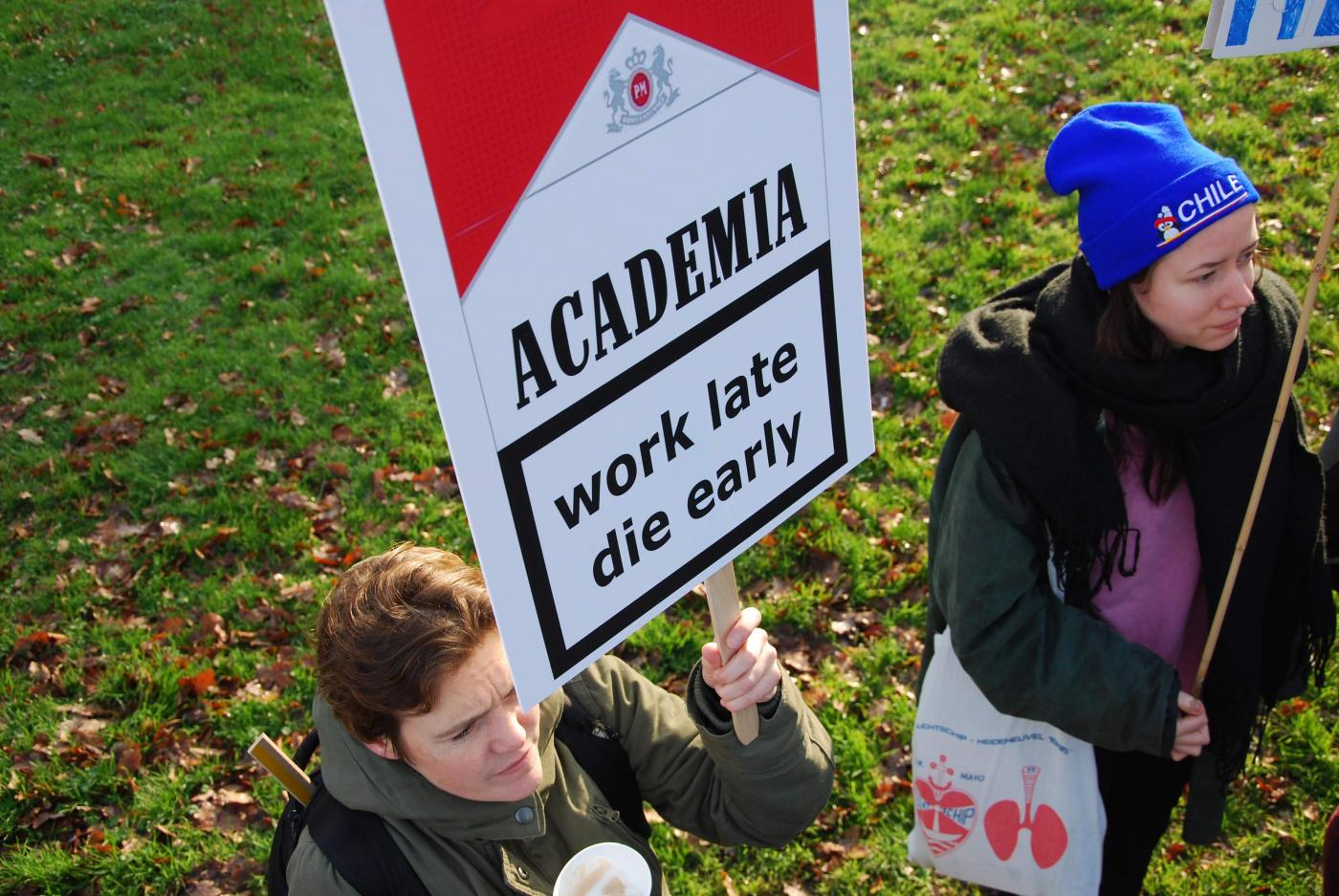Research confirms that workload is high in academia

Once every three years, the Ministry of Interior conducts a major survey about job satisfaction in the public sector. The 2019 survey, whose results are being publicised now, was completed by 40,000 respondents, 16,000 of them work in education.
Their answers stood out, and not in a positive way. A staggering number of respondents working in education agreed with statements like “When I get home from work, I am completely exhausted” and “When I come home, I should be left alone.”
Exhausted
VSNU then requested a separate research to dig deeper into the issue. That’s how they found that almost two thirds of those working for universities, university medical centres, and universities of applied sciences are dealing with a high or very high workload.
Teachers and scientists are the ones most affected: 72 percent of them reported having this problem, against 52 percent of the support staff. One in three scientists feels “completely exhausted” at the end of a working day. Workloads are higher for managers than for employees without management tasks.
The researchers also saw a clear pattern among scientific staff: the older the employee, the higher the perceived workload. This applies especially to those aged between 45 and 55 year old: about 80 percent of them are having a hard time.
Not a recent phenomenon
Concerns about the workload in higher education have been ongoing for years. Protest movement WOinA Actie even went to the Labor Inspectorate earlier this year to complain about the problem. UU students also protested last summer by painting thousands of red squares on the streets of Utrecht in solidarity with their overworked teachers.
“Hasn't @WOinAction already made that analysis a long time ago?” asked Leiden professor Remco Breuker on Twitter. “And the Rathenau, SoFoKleS, the KNAW, and the Young Academy, and… ” added philosophy teacher Carlo Ierna.
Valuable
VSNU has certainly not ignored the issue, says spokesman Wesley Boer. “We already asked in 2016 whether we could use the results to get a clearer idea of how our sector is doing, as we have been seeing for years that the workload is high and is only increasing.”
Albeit unsurprising, Boer still finds this new analysis valuable. After all, the figures show how the workload differs between young and older employees, scientific staff and support staff, and managers versus employees.
Other reasons to be happy
But it isn’t all doom and gloom. Despite the workload, most respondents working in universities (85 percent) are satisfied or very satisfied with their job, and nearly 80 percent is satisfied with their colleagues. In addition, 65 percent are satisfied with the organisation they work for.